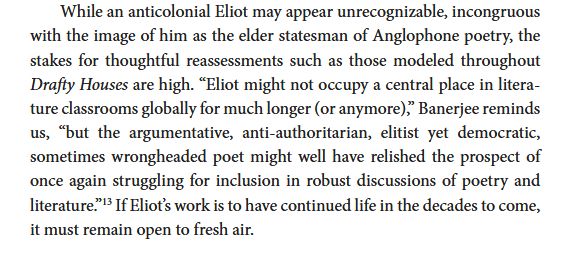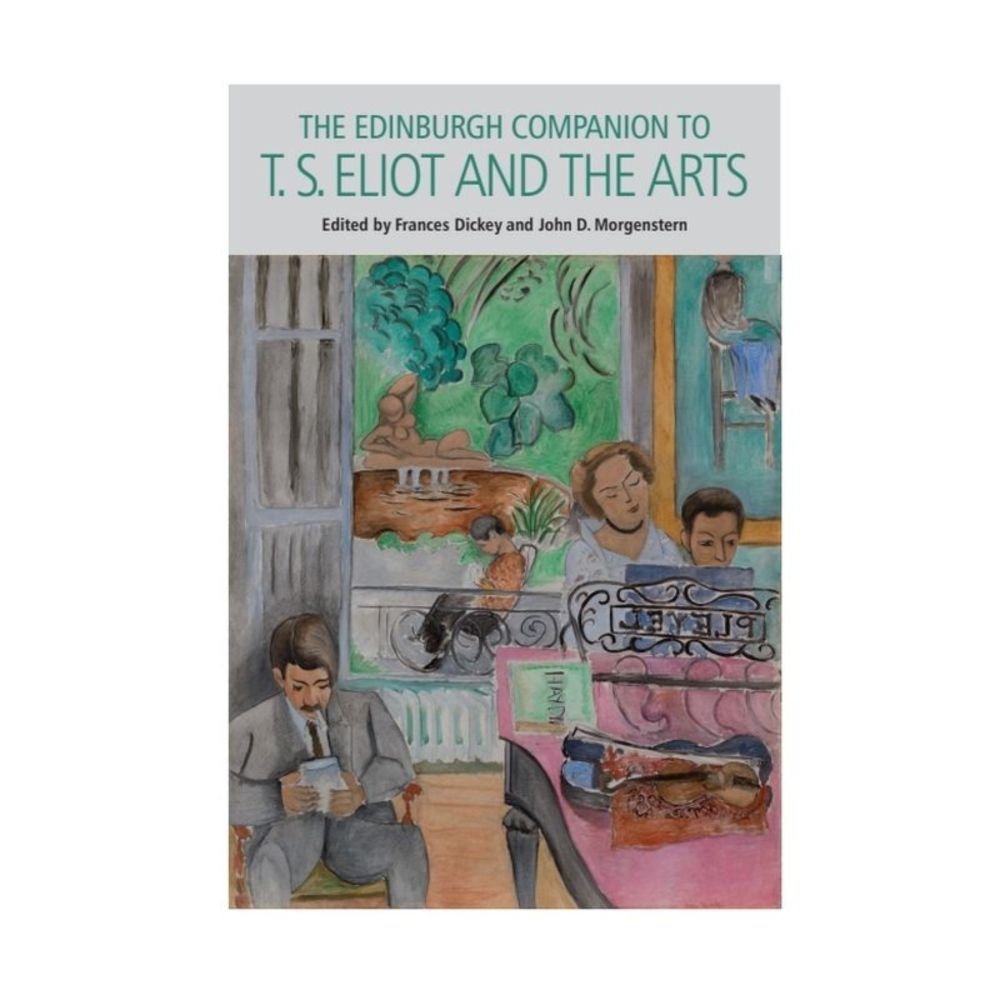
A standout reading of "Gerontion" (1920), to name one of several insightful reassessments that delineate an anticolonialist trajectory, demonstrates Eliot's use of architectural metaphor and history to evoke British imperialism during the interwar years. The poem moves through Gerontion's "draughty house," traversing "contrived corridors" before shifting to Belle Isle, the Horn of Africa, and an unspecified Gulf, where it encounters the trade winds, a symbol of "global interdependence (financial, political, and also of war)."11 Drawing on concurrent architectural theory, Banerjee attends closely to the poem's "corridors," bringing to bear their relationship to imperial history. After encountering corridors in Caribbean architecture during the eighteenth century, British builders introduced this design feature into governmental buildings, such as law courts and police stations, recognizable bastions of state authority. "Reading the poem with architectural theory in mind," Banerjee explains, "uncovers sedimented layers of colonial consciousness implicit in the poem."12

While an anticolonial Eliot may appear unrecognizable, incongruous with the image of him as the elder statesman of Anglophone poetry, the stakes for thoughtful reassessments such as those modeled throughout Drafty Houses are high. "Eliot might not occupy a central place in litera- ture classrooms globally for much longer (or anymore)," Banerjee reminds us, "but the argumentative, anti-authoritarian, elitist yet democratic, sometimes wrongheaded poet might well have relished the prospect of once again struggling for inclusion in robust discussions of poetry and literature."13 If Eliot's work is to have continued life in the decades to come, it must remain open to fresh air.
People are marching, and my book has its first review! So grateful and delighted - thank you, @johnmorgenstern.bsky.social 🌻
15.06.2025 15:11 — 👍 5 🔁 1 💬 0 📌 0
